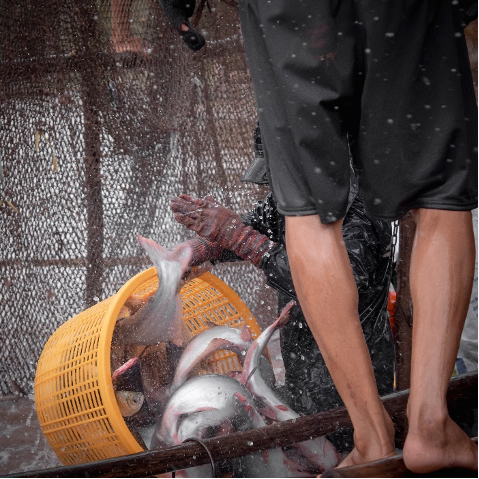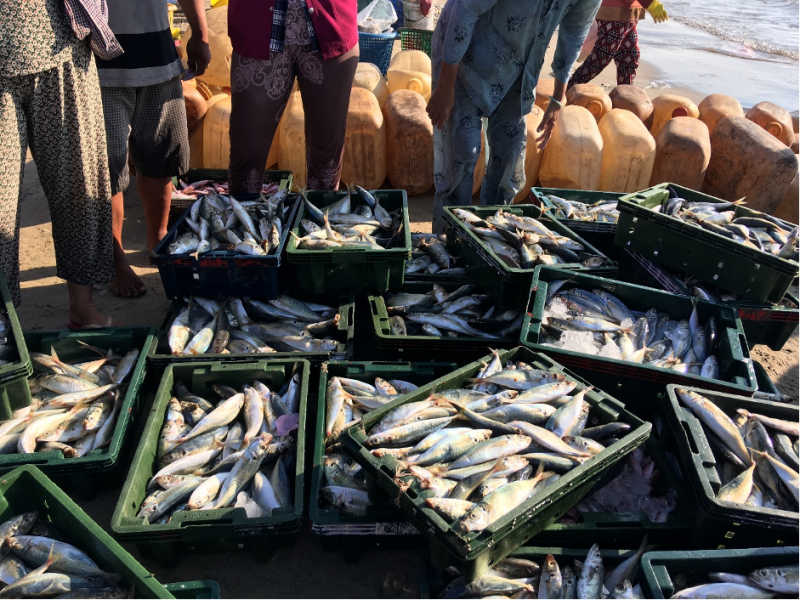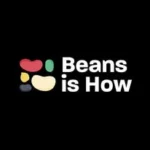Aquaculture is a sustainable alternative to capture fisheries
New report from GLOPAN makes the case for harnessing the potential of aquaculture for healthy diets
Research findings and policy recommendations from the Global Panel on Agriculture and Food Systems for Nutrition (GLOPAN) underscore the role of aquaculture in healthy diets and resilient food systems.
A new report from GLOPAN argues that aquaculture could be the answer to increasing the sustainable production of fish, to support the achievement of Zero Hunger by 2030 and good food for all.
Fish is an important economic, cultural and nutritional resource for many low and middle income countries. Rising economic growth, health consciousness and increasing urbanisation have resulted in an upsurge in demand for fish and other aquatic foods.
Traditionally, fish farming has relied upon capture fisheries or wild-catch fisheries, which refer to fish caught in their natural habitats. This method of fishing has, however, stalled since the 1990s, due to overfishing and the impact of climate change.

It involves farming aquatic animals, algae and seaweed in both salt and fresh water using inputs to enhance production, such as regular stocking, feeding and protection from predators. Examples range from households practicing polyculture of carp and small indigenous fish in small homestead ponds in Bangladesh, to rice field fisheries in Cambodia, to large scale tilapia farms in the lakes of Honduras. It is a very productive use of resources.
Fish have a crucial role in ensuring healthy and nutritious diets. It is high in protein, omega-3 fatty acid and micronutrients; in fact, diverse local fish are often the best way to improve nutrition in local diets, especially for young children who have high nutritional needs. Also, whilst fish is sometimes seen as an expensive luxury good, in countries like Bangladesh even the poorest quintile of the population consumes fish every other day.
Despite this, aquaculture is often overlooked in food security discussions. It requires fresh water, land and other agricultural inputs, conditions that are also required for the rearing of land-based livestock and crops. With policy makers forced to reflect on the trade-offs between the two forms of food production, economic outputs are often prioritised over food security and nutrition. Thus, aquaculture often loses out to land-based food production.
“Too often, policy decisions relating to aquaculture and fisheries neglect the implications for nutrition and health. This needs to change.”
– Qu Dongyi, Member of Global Panel and Director General of Food and Agriculture Organisation (FAO)
SDG14.4 aims to end overfishing by 2030
Aquaculture can support the achievement of this goal as it has the potential to surpass the fish production of capture fisheries by 2024, exceeding 105 million tons by 2029 in a sustainable way. Whether this happens, however, will depend on the extent to which nations support aquaculture production through policy enablement, investment in value chains and promotions of jobs in the sector. In 2018 an estimated 20.5 million people globally were employed in the primary sector of aquaculture, with about 95% located in Asia and 2% in Africa.
“Africa has huge potential to develop and benefit from a strong aquaculture sector. In terms of employment, for example, the number of jobs linked to aquaculture in Africa has more than tripled since 2000, but remains very small compared with Asia. Much more is possible for the future including for food security and nutrition.”
– Agnes Kalibata, UN Special Envoy of the 2021 Food Systems Summit and Global Panel Member

Aquaculture production does not come without its challenges. The report explores many of these, including waste and loss in value chains, genetic and breeding complexities, antimicrobial use and resistance, and the need for more research into fish feed improvement.
Despite these challenges, the case for aquaculture being able to improve food security, provide employment opportunities, and deliver sustainable nutritious food for millions of people around the world, particularly in low and middle income countries, is clear.
The report concludes with a comprehensive set of suggestions for governments, relevant stakeholders and researchers, which aim to tackle the major challenges associated with the expansion of the aquaculture sector.
These recommendations underscore the overarching message of this report: aquaculture must stop being side-lined in policies and dialogues relating to nutrition and food systems. Instead it is time to begin discussions in earnest on how we can harness the sector’s potential.
Get involved:
- Read the full report here
- Join the conversation on Twitter using #Aquaticfoods
- Learn more about the 2021 UN Food Systems Summit here
Photo credits: Photo 1 by Hanson Lu on Unsplash; Photo 2 by Milo Weiler on Unsplash; and Photo 3 by Duangphorn Wiriya on Unsplash.









